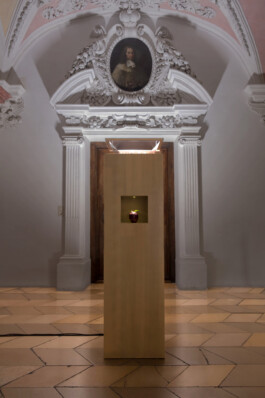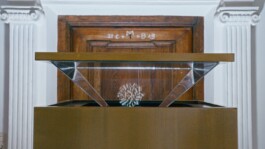


2024
Prof. Andreas Muxel
Prof. Dr. Michael Kipp
Master project in Interactive Media Systems
This audiovisual, interactive installation is based on a conspiracy narrative that claims a device named Chronovisor was developed in the Vatican in the 1960s. Italian priest and scientist Father Pellegrino Maria Ernetti gathered prominent figures like Enrico Fermi and Wernher von Braun. They achieved the unimaginable: creating a device that could objectively capture the past accurately. The reception device is set to a specific location, date, and person, and the event is displayed on a monitor in a form resembling a hologram. Soon, significant key events in the narrative of the Catholic Church, such as the crucifixion and resurrection of Jesus, were purportedly proven. However, these findings were quickly disputed.

This new version of the Chronovisor uses generative artificial intelligence, acting as a collection of collective perceptions. AI analyzes every object, interprets it in its historical context, and generates a real-time visual representation of it's past. Visitors can look back and experience historical key events themselves. What does our collective, compressed memory look like? How objective is the data? If there is one true past and history, it must be found there.

Overall, the Chronovisor is designed to provoke thought and discussion on the objectivity of history and the role of technology in shaping our understanding of the past. Its combination of interactive elements and advanced AI technology offers a unique, engaging, and educational experience for visitors.


